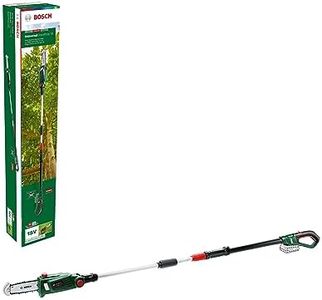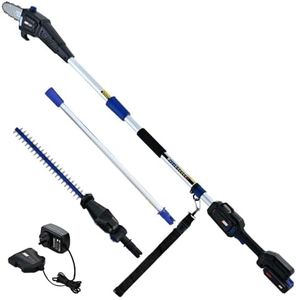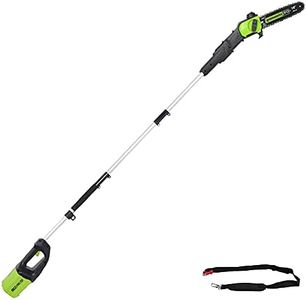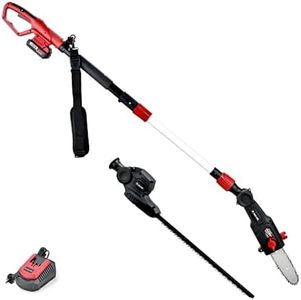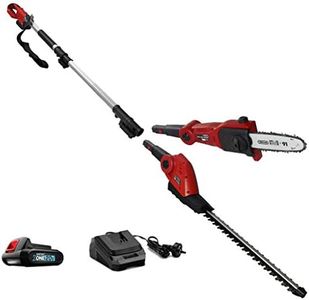We Use CookiesWe use cookies to enhance the security, performance,
functionality and for analytical and promotional activities. By continuing to browse this site you
are agreeing to our privacy policy
10 Best Cordless Pole Saw
From leading brands and best sellers available on the web.Buying Guide for the Best Cordless Pole Saw
When choosing a cordless pole saw, it's important to consider how you'll use it: Do you need it for light trimming around your yard, or do you have larger or frequent jobs that demand more power and reach? Cordless pole saws are popular for their convenience, reduced noise, and mobility since you’re not limited by a cord. However, there are a few key specifications to consider so you can select the model that fits your needs and your property size.Battery VoltageBattery voltage indicates the power potential of the pole saw; higher voltage generally means more cutting power. For simple trimming and lighter branches, lower voltage options (around 18V to 24V) are usually sufficient, making them lighter and easier to maneuver. Middle-range voltages (about 36V to 40V) give you more power for thicker branches or more frequent jobs. The highest voltage pole saws are designed for tackling heavy-duty work. Pick a voltage that matches how tough and frequent your typical pruning tasks will be.
Bar LengthThe bar length refers to the cutting blade’s length and determines the maximum branch thickness the saw can cut in one pass. Shorter bars (6-8 inches) are easier to control and best for trimming thinner branches, which is perfect for occasional or decorative pruning. Medium (8-10 inches) are more versatile for general yard maintenance. Longer bars (10 inches or more) allow you to cut thicker and tougher wood but can be heavier. Decide how thick the branches in your garden usually are, and select a bar length that can handle them comfortably.
Reach/Extension LengthThis spec tells you how high the tool can extend and, effectively, how far up you can reach. Models usually extend from 8 to 12 feet in total. If your trees are small or you only need to reach lower branches, a shorter reach will make the tool easier to handle. For higher or mature trees, a longer reach is essential. Think about the height of the trees on your property and pick accordingly; you want something long enough for your needs, but not so long that it becomes difficult to balance.
WeightThe weight impacts how long and how easily you’ll be able to use the pole saw, especially overhead. Lighter models (often under 10 pounds) are good for smaller users or for jobs that require you to hold the saw for long periods. Heavier models may offer more power, but can quickly become tiring. Be realistic about your upper body strength and endurance; always choose a model you can safely and comfortably control.
Battery Runtime and Charging TimeRuntime indicates how long you can use the saw on a full charge, typically ranging from 30 minutes to over an hour. Charging time is how long it takes to recharge the battery. If you have a lot of work to do in one go, look for longer runtimes or consider if extra batteries are available, so you don’t have to stop and wait for a recharge. On the other hand, if your pruning jobs are quick and rare, runtime is less crucial. Your workflow and how frequently you plan to use the saw should inform your choice here.
Ease of MaintenanceLook for features that make the tool easy to maintain, like tool-less chain tensioning or automatic oiling systems. These help keep the saw running smoothly without much hassle. If you prefer minimal upkeep, look for a model that offers straightforward maintenance features.
